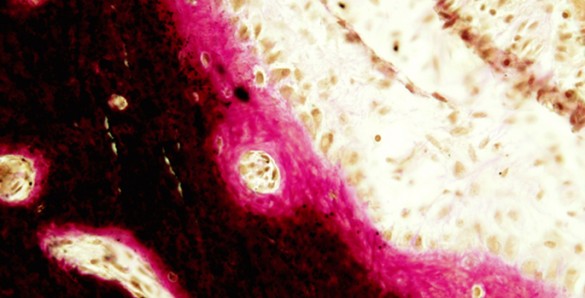by Katherine Venmar

Neurofibromatosis type-1 (NF1) is a debilitating genetic disease with symptoms including bone fragility and fractures that don’t heal (pseudoarthrosis) in children.
Understanding how defects in osteoblasts – the bone building cells – caused by mutations in the Nf1 gene prevent bone union is essential for developing successful bone healing therapies for these patients.
In a paper published in the Journal of Bone and Mineral Research, Florent Elefteriou, Ph.D., and colleagues describe a novel mouse model of human NF1 pseudoarthrosis, in which Nf1 is deleted specifically in osteoprogenitors (osteoblast precursors) in postnatal mice.
They showed that local treatment with BMP2 (bone morphogenic protein 2) promotes recalcitrant bone healing in mice lacking Nf1 in adult osteoprogenitors when it is combined with a drug (trametinib) that inhibits a pathologic signaling pathway that “blunts” the cells’ response to BMP2.
Their findings suggest that a dual and focal therapeutic approach may enhance bone healing in children affected by NF1 and pseudoarthrosis.
This work was supported by National Institutes of Health grants AR055966 and RR027631.
Send suggestions for articles to highlight in Aliquots and any other feedback about the column to aliquots@vanderbilt.edu














